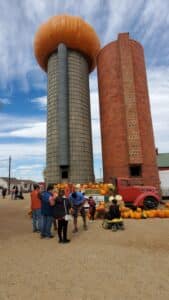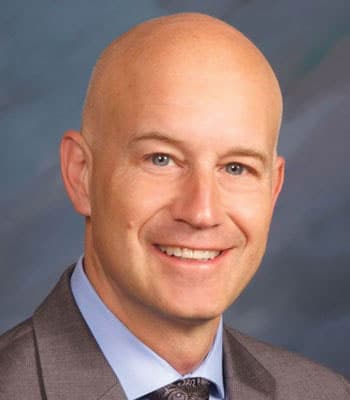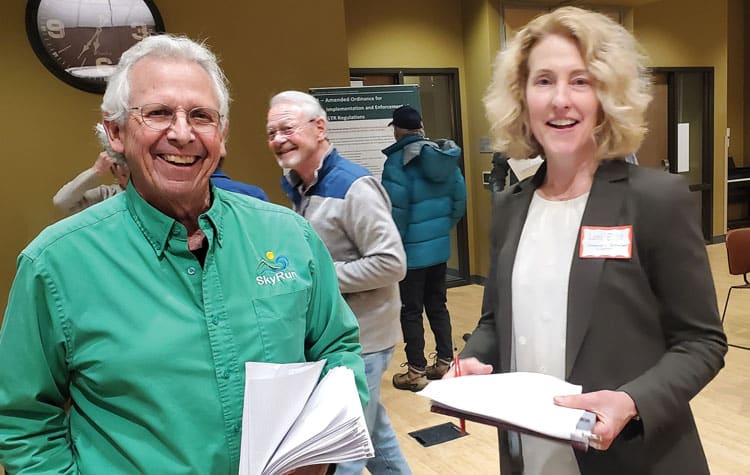Northern Water likely to set a typical quota later this week
LOVELAND — It won’t be official until Thursday, but if the board of the Northern Colorado Water Conservancy District follows its pattern of recent years, the quota for those holding shares of the Colorado-Big Thompson project will likely be 70% to start the 2023 water year.
An allocation at that level means that the owner of a share — or 1 acre-foot — of the C-BT project would be able to realize 0.7 of it. With 310,000 acre feet available in the project at 100%, a 70% allocation means that 217,000 acre feet would be available. There are 325,851 gallons in an acre foot.
Members of the board along with a full house of water users gathered today at the Embassy Suites conference center in Loveland for Northern Water’s spring symposium. The actual allocation for the start of the growing season is determined by the board, which meets at its next meeting Thursday.
The message from Northern Water staff and from the Colorado Division of Water Resources was simple:
- Snowpack is above average, especially north of Clear Creek.
- Reservoir levels are below average, especially the farther east one travels in the district.
- Soil moisture is dry.
Those factors, along with other considerations such as planning for weather and political uncertainties means that the board will likely be conservative and not allocate everything that it could.
Setting the quota is somewhat counterintuitive. When the region experiences a wet year with more water available — such as this year — the district tends to set the quota lower. When it’s dry, it sets the quota higher so that crops can be maintained. C-BT water, water managers emphasize, is a supplemental supply. Native water sources are primary. Unused water is stored.
“Snowpack gives us some kind of comfort,” said Mike Applegate, president of the Northern Water board. “But it’s all in the short term. The long term is uncertain.”
Corey DeAngelis, division engineer with the Colorado Division of Water Resources, said the state is in “really good shape north of a line between Clear Creek and Boulder Creek,” where snowpack is 110% to 115% of average. But below that line, snowpack is about 70% of average. Drought conditions are mild in the north, he said.
Reservoir levels are not where they need to be, he said. In 2021, another wet year, reservoirs were 121% of average. But this year, he projected that reservoirs would be 93% of average, with some reservoirs nearly completely dry in the eastern farm region because of a dry 2022.
Luke Shawcross, water resources department manager at Northern Water, narrowed the water status and predictions to the Northern Water district
He said snowpack in the area that feeds the C-BT is at 106% of typical for this time of year, with the Upper Colorado basin at 138% of average. Stream flows are also above average.
Temperatures so far this year have been below average, which helps avoid premature snowmelt. This week, however, the region may see record-high seasonal temperatures.
Applegate couldn’t predict what the board will do, but for himself he said 70% is a level with which he’s comfortable.
Other issues of note
The gathered crowd also heard about the status of the district’s two major water projects — the Windy Gap Firming Project/Chimney Hollow, which remains under construction, and the Northern Integrated Supply Project, or NISP, which received its final regulatory permit from the U.S. Army Corps of Engineers between the times of the fall and spring symposiums. Both projects are important to water-system resiliency in the region, said Brad Wind, general manager of Northern Water.
“Storage provides economic certainty,” Applegate said.
Wind said the board is encouraging the region to pay attention to efforts from other areas of the state to gain control of native supplies in the north.
The group also heard from Scott Griebling, water resources engineer at the St. Vrain and Left Hand Water Conservancy District, which has recently embarked on a cloud seeding project to help increase amounts of snow that fall in the district’s watershed.
Cloud seeding is the process of stimulating more snowfall — or rain in the summer — by sprinkling silver iodide into water-laden clouds. Water molecules attach to the chemical, crystalize and fall as snow.
While it is too soon to say how beneficial the process might be, “when comparing areas that have been seeded with those that haven’t, we’re seeing 5% to 15% efficacy,” he said. He’s hoping to gain between 1,000 and 4,000 acre feet of additional runoff as a result.
“You need a storm that has moisture in it, and temperatures need to be low enough to form snow,” he said. In Wyoming cloud-seeding projects, the silver iodide is delivered by airplane above the clouds. In the St. Vrain district, ground-based generators using upslope wind conditions deliver the chemical.
“There’s no disputing the physics. This works,” he said.
Cloud seeding doesn’t strip moisture out of the clouds to the detriment of some other area, he said. Winter storms are not very efficient. Only about 10% of the moisture in the air falls as snow; cloud seeding taps the remaining 90% and wrings a small additional amount from it, he said.
The cost to the St. Vrain district is about $138,000 this year.
Source: BizWest





